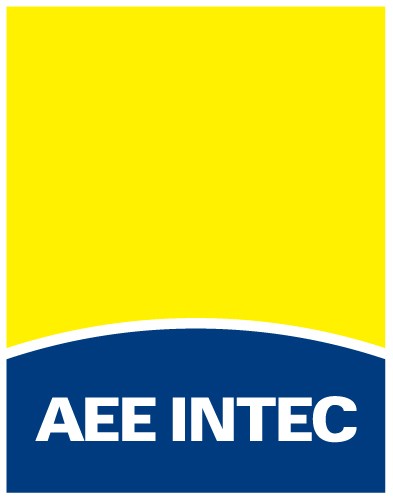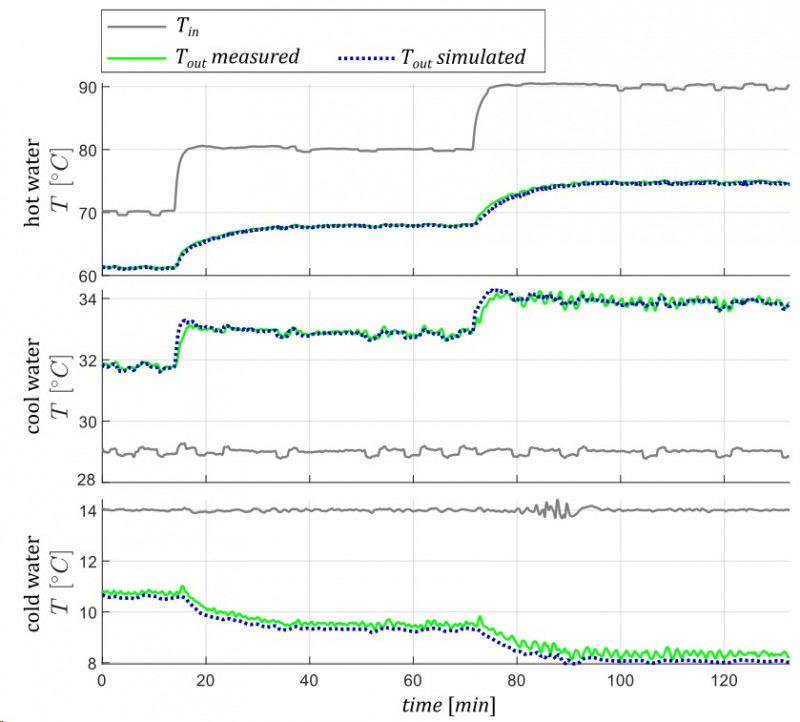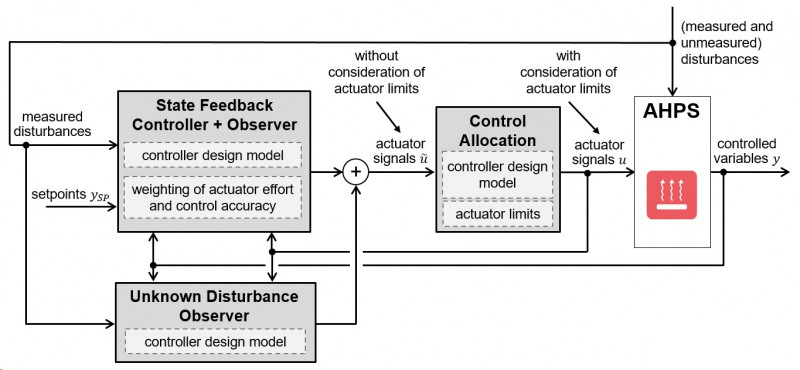HPC: Modellbasierte Regelung von Absorptionswärmepump-Anlagen
Absorptionswärmepump-Anlagen (AWPA, beschreiben sowohl Wärmepumpen als auch Kältemaschinen) nutzen thermische anstelle von mechanischer Energie als Antrieb und gelten daher als vielversprechende Möglichkeit, den Anteil erneuerbarer Energien im Wärme- und Kältesektor zu erhöhen. In der Vergangenheit wurden AWPA typischerweise bei eher konstanten, stationären Betriebsbedingungen eingesetzt - im Zuge des wachsenden Umweltbewusstseins beginnen AWPA nun aber auch für andere Anwendungen, bei denen die Betriebsbedingungen deutlich dynamischer sein können, attraktiv zu werden.
Die derzeit eingesetzten Regelungsstrategien sind oft nicht in der Lage, die Anforderungen für diese variierenden Betriebsbedingungen zu erfüllen. Aus diesem Grund zielte das Projekt HPC darauf ab, die Regelung von AWPA zu verbessern, indem die gekoppelten und teilweise nichtlinearen Zusammenhänge zwischen den verschiedenen Prozessgrößen sowie die Schwankungen externer Störungen (wie z.B. schwankende Vorlauftemperaturen) explizit berücksichtigt und kompensiert werden sollen. Dafür wurden im Projekt HPC modellbasierte Regelungsstrategien für AWPA entwickelt.
Dazu wurde zunächst ein Teststand mit umfangreicher Mess- und Steuertechnik für zwei AWPA (eine H2O/LiBr und eine NH3/H2O Maschine) geplant und gebaut, sowie zahlreiche Versuche zur Untersuchung des statischen und dynamischen Verhaltens der beiden Anlagen durchgeführt. Daraufhin wurden jeweils zwei Modellarten zur Beschreibung des dynamischen Verhaltens der beiden Maschinen entwickelt, die jeweils unterschiedlichen Zwecken dienen: Die erste Modellart (Simulationsmodell) beschreibt das Anlagenverhalten sehr detailliert und hat den Zweck, als virtueller Teststand zu dienen. Damit können z.B. die Untersuchung von Teillastverhalten und Betriebspunktwechsel und das Testen von neuen Regelstrategien kosteneffizient, schnell und sicher in der Simulation erfolgen. Die zweite Modellart (Reglerentwurfsmodell) beschreibt die wichtigsten Elemente des Anlagenverhaltens mittels möglichst einfacher mathematischer Zusammenhänge und hat den Zweck, direkt beim Entwurf des Reglers eingesetzt zu werden, um das Anlagenverhalten explizit zu berücksichtigen. Die Ergebnisse für beide Modellklassen können für den jeweiligen Einsatzzweck (Simulation und Reglerentwurf) als sehr zufriedenstellend bezeichnet werden (siehe Abbildung 2).
Mithilfe dieser Modelle erfolgte daraufhin durch iterative Entwicklung und Validierung in der Simulation und am realen Teststand der Entwurf von zwei modellbasierten Regelungsstrategien für AWPA: Einerseits der Entwurf eines modellprädiktiven Reglers (MPC – Model predictive control) und andererseits der Entwurf eines Zustandsreglers. Beide Regelungsstrategien basieren auf Mehrgrößen-Regelungsansätzen, die die Einbindung von mehreren Stellgrößen ermöglichen und so den Betriebsbereich, in dem die AWPA geregelt werden kann, gegenüber herkömmlichen Einzelgrößen-Reglern vergrößern kann. Dies bedeutet eine verbesserte Regelgüte insbesondere in Teillastsituationen und reduzierten ON/OFF Betrieb. Zusätzlich ermöglicht der modellprädiktive Regelungsansatz (MPC) zum einen die Berücksichtigung von Prognosedaten für Störgrößen (wie etwa variierende Eintrittstemperaturen) und zum anderen die Priorisierung von Regelgrößen, sodass selbst beim Betrieb im äußersten Stellbereich die hoch priorisierten Regelgrößen nach wie vor nahe am Sollwert gehalten werden können. Schlussendlich sollen die entwickelten modellbasierten Regelungsstrategien die Zuverlässigkeit und Modulierbarkeit von AWPA erhöhen, um damit ihren Einsatz auch für Anwendungen mit variierenden Betriebsbedingungen zu erleichtern.
>>> Download Endbericht <<<
Projektvolumen
EUR 1,039.296,--
Projektlaufzeit
2018-05-01 - 2021-04-30
Finanzierung
Dieses Projekt wird aus Mitteln des Klima- und Energiefonds gefördert und im Rahmen des Energieforschungsprogramms 2017 durchgeführt. FFG / Energieforschungsprogramm - 4. Ausschreibung Energieforschung 2017
Projektpartner


Technische Universität Graz - Institut für Wärmetechnik

SOLID Solar Energy Systems GmbH

Pink GmbH

EAW Energieanlagenbau GmbH Westenfeld

AEE - Institut für Nachhaltige Technologien
Area Management

Markus GÖLLES
markus.goelles@best-research.eu
Publikationen
Endbericht: Heat Pumping system Control (HPC)
Experimentally verified dynamic simulation model of a NH3/H2O-absorption refrigeration system
Experimentally verified dynamic simulation model of a NH3/H2O-absorption refrigeration system
MATHEMATICAL MODEL FOR MODEL-BASED CONTROL OF ABSORPTION HEAT PUMPING SYSTEMS
Model-based control of absorption heat pumping systems
Control-oriented modeling of a LiBr/H2O absorption heat pumping device and experimental validation


